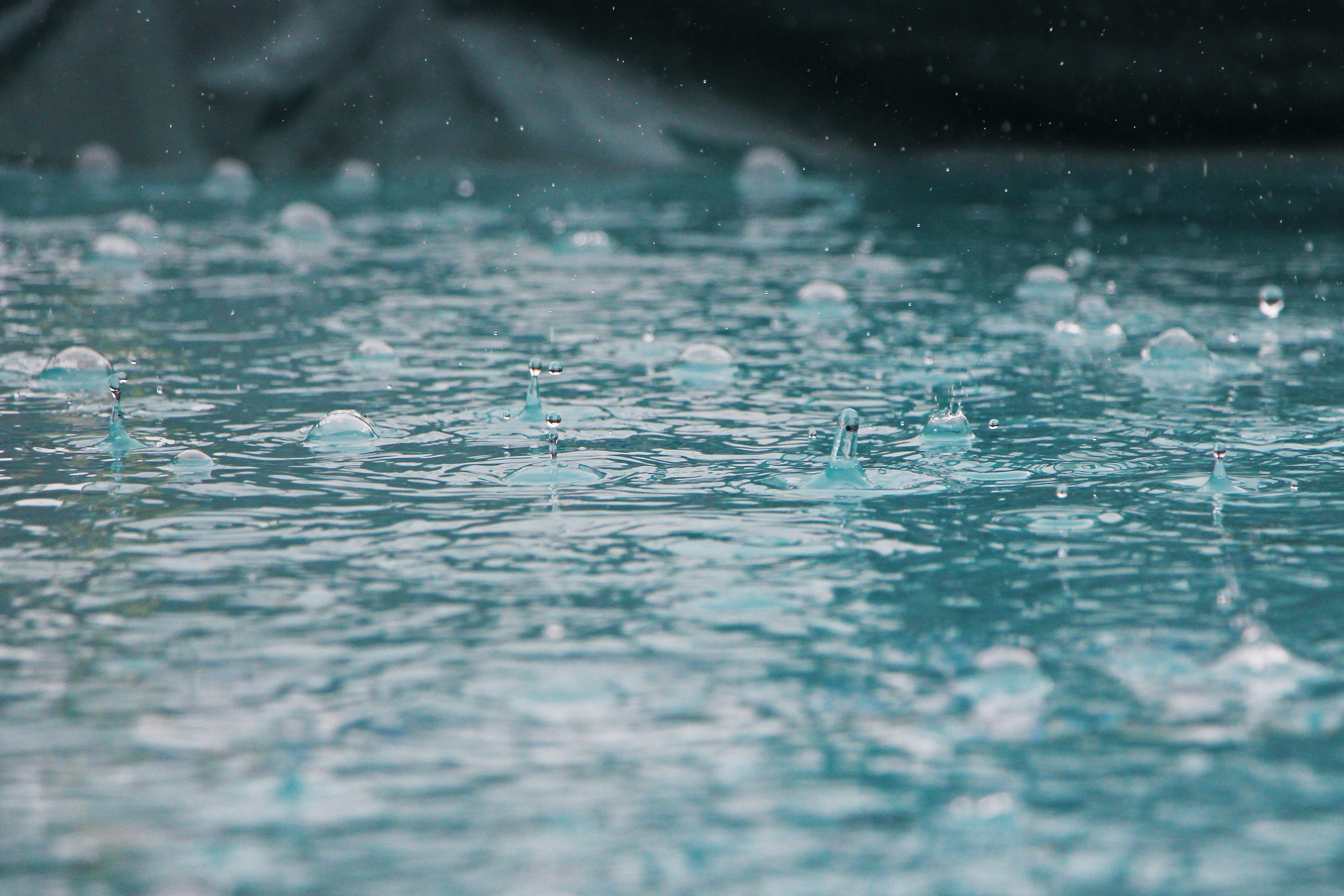The quick answer is, ideally not, but it rains a lot in the UK and if getting your concrete laid in the rain is unavoidable and you can’t wait for a dry patch, then read on.
Pouring concrete in the rain
First let’s look at the potential issues caused by pouring concrete in the rain and how rain can damage concrete.
Concrete is formed when you mix together cement, aggregates and water. A chemical reaction between cement and water then takes place, causing the concrete to harden and strengthen.
Consequently, if enough rain falls and gets itself into the concrete mix, or the concrete is laid onto a wet enough surface, this will affect the proportions of the mix and potentially result in weaker concrete once it’s set.
If you do manage to pour concrete in the dry and it subsequently rains, this will result in damage to the smooth surface, resulting in a bumpy and uneven layer.
How long before concrete can get wet?
For Portland Cement concrete – the most commonly used around the world – we recommend allowing four days for it to harden and become weather-proof.
How to protect concrete from the rain until it cures
As we live in the UK and waiting for four days of rain free weather might leave you in a spot of bother.
If the forecast is set for rain, we recommend erecting a timber shelter over any freshly laid and covering this in a waterproof layer, such as damp proof membrane plastic sheeting (DPM) or a tarpaulin.
What to do if your concrete still gets wet?
Don’t be tempted to allow the rainwater to enter your concrete slab and don’t add more cement over the top in an attempt to absorb the water, as you’ll only weaken the integrity of your mix. Afterall, you measured out the proportions of each element, or used ready mix concrete in the right proportions for a reason, adding extra concrete or rain water at this stage is not a good idea!
If you get caught out, build a shelter to stop any further rain reaching your slab and, if the concrete below is cured enough, push any remaining water off the surface edge.
If necessary, you can skim back any damaged or rain-discoloured areas once the concrete surface is sufficiently hard and then relay fresh concrete on top of that. This however will still not be as strong as it might have been in a single pump of concrete, but if needed can act as a workaround to remedy partially rain damaged surfaces. The only other option if your slab is completely ruined by rain, would be to excavate the whole lot and start again, which for obvious reasons of time, money and material waste, would be best avoided..
How can I plan for concrete delivery in inclement weather?
McHugh concrete offers flexibility on delivery for rain conditions. Simply let us know 24 hours before delivery and we can reschedule.
Ordering couldn’t be simpler. Just work out the amount you need using our handy online calculator or get in touch and we’ll be happy to help.
So there we have it – everything you need to know about the pitfalls of laying concrete in the rain and ways to negate potential damage to your surfaces.
Thanks for reading.
